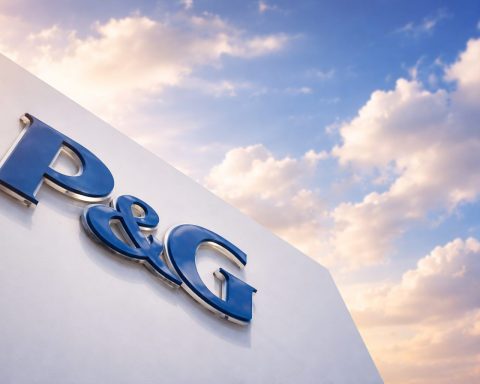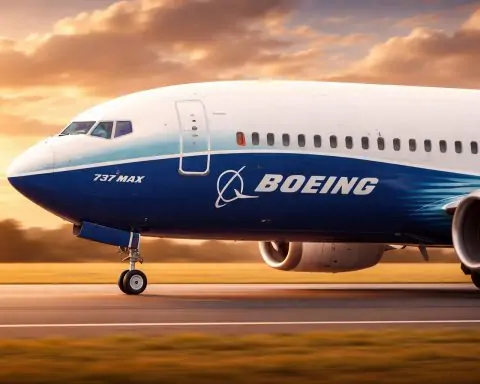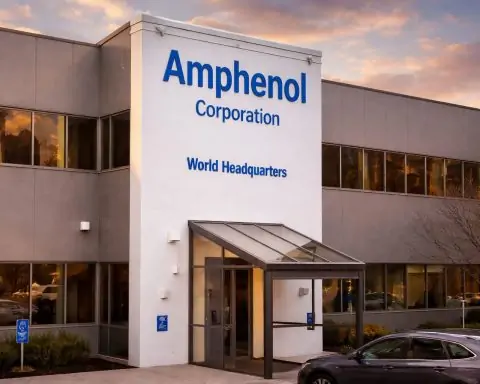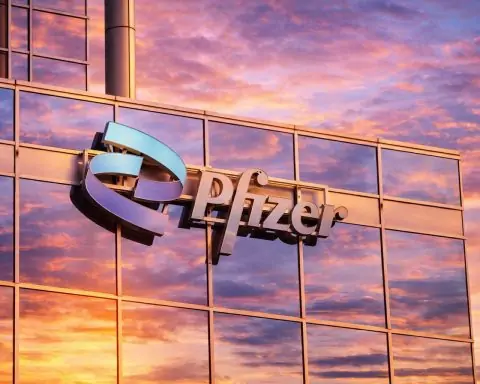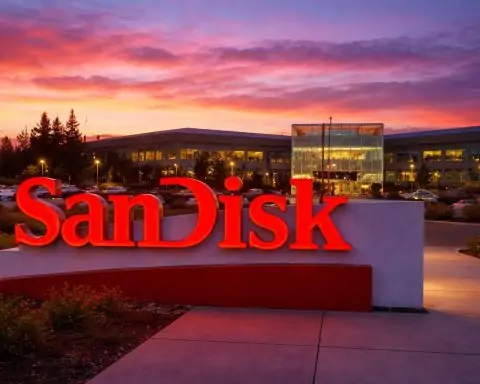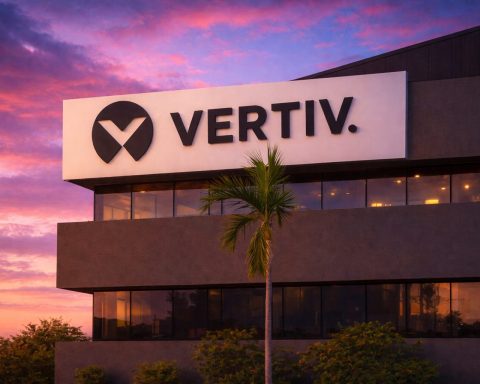Key Facts – October 18, 2025
- Surging Stock:SELLAS Life Sciences (NASDAQ: SLS) shares have doubled year-to-date in 2025, closing around $2.14 on Oct. 17 (up ~100% YTD) after spiking +38% in after-hours trading on Friday [1]. The stock hit a new 52-week high of $2.27 this week, far above its yearly low of $0.77 [2].
- BlackRock Stake: Investment giant BlackRock disclosed a 5.4% ownership stake (~5.7 million shares) in SELLAS, signaling confidence from the world’s largest asset manager [3]. The news coincided with a sharp rally in SLS shares, underscoring bullish institutional interest [4].
- Pipeline Progress: SELLAS’s lead cancer immunotherapy GPS (galinpepimut-S) is in a Phase 3 trial for acute myeloid leukemia (AML). Interim results showed median patient survival over 13.5 months – more than double the ~6-month historical average [5]. An independent monitoring committee gave a green light to continue the trial after a positive safety review [6], with final results expected by year-end 2025.
- New Therapy Data: SELLAS’s second candidate SLS009 (tambiciclib), a selective CDK9 inhibitor, just posted strong preclinical results in an aggressive T-cell leukemia model. Mice treated with SLS009 (alone or with combo therapy) lived around 7–8 weeks vs. 4.4 weeks on the standard drug venetoclax – a statistically significant improvement [7]. Company scientists call the findings “highly encouraging,” pointing to SLS009’s potential to improve outcomes in T-PLL (a rare leukemia) [8].
- Analyst Upside: Wall Street sees major upside if SELLAS’s trials succeed. Maxim Group recently raised its SLS price target to $7.00 (implying over +200% from current levels) and maintains a “Buy” rating [9]. However, not everyone is bullish – independent firm Weiss Ratings slapped SLS with a low “Sell (D-)” grade in October [10], reflecting the high risks inherent in biotech.
- Upcoming Catalysts:Investors are eyeing late-October and year-end events. SELLAS will host a virtual R&D Day on October 29, 2025 to showcase its AML pipeline (with key opinion leaders) [11]. By Q4 2025, the critical Phase 3 REGAL trial readout for GPS is due, a potential make-or-break moment for the company [12]. Positive data could pave the way for regulatory filings in 2026, while any disappointment would reset investor expectations.
Stock Performance: SLS on a Tear in 2025
SELLAS Life Sciences’ stock has been on a remarkable run this year. Shares have effectively doubled in 2025, and the momentum accelerated in mid-October. On Friday Oct. 17, SLS closed at $2.14, up roughly 100% year-to-date [13]. In fact, during that day’s session the stock touched a 52-week high of $2.27 (more than 3× its 52-week low of $0.77) [14]. Trading activity exploded as well – volume spiked to several times the usual level (over 6.7 million shares vs ~2.2M average) amid a flurry of speculative buying. Options traders piled in, with call option volume surging 761% above normal on one particularly active day [15], reflecting intense bullish bets on the stock’s short-term upside.
The rally didn’t stop at the closing bell. After-hours trading on Oct. 17 saw SLS jump another ~38% beyond its regular-session close [16]. By that evening, the share price neared $2.94 in extended trading – an astonishing one-day move that had investors buzzing. Such volatility underscores both the opportunistic fervor around SELLAS and the high risk nature of small-cap biotech stocks. At a market capitalization around $230 million, SELLAS is still a tiny player in the sector, and its stock remains prone to outsized swings on news and speculation.
Latest Company News: Bullish Backers and Breakthrough Data
Several fresh developments are fueling the excitement around SELLAS. Most prominently, BlackRock – the world’s largest asset manager – has taken a big new stake in the company. In an SEC filing disclosed Oct. 18, BlackRock reported owning 5,686,886 shares of SLS (about 5.4% of the company) [17]. This effectively gives BlackRock a significant voting bloc in SELLAS. Such an endorsement by a $9 trillion fund manager is notable for any micro-cap biotech. It suggests smart money sees long-term value: “BlackRock’s disclosure suggests growing institutional confidence in Sellas’s potential despite the inherent risks of biotech investing” [18]. Indeed, the BlackRock news seemed to ignite buying interest – SLS’s bullish momentum in recent sessions was punctuated by that after-hours leap on Friday [19] once word of the stake spread. For a company of SELLAS’s size, having a heavyweight like BlackRock on the shareholder roster is a credibility boost that can attract other investors’ attention.
At the same time, SELLAS has delivered encouraging news from its cancer drug pipeline, which is the fundamental driver of the stock’s valuation. The company’s lead candidate GPS (Galinpepimut-S) – a cancer immunotherapy vaccine – is deep in a Phase 3 trial (REGAL) for acute myeloid leukemia. In an interim update, an independent Data Monitoring Committee reviewed safety data and gave a green light for the trial to continue unchanged [20]. More impressively, patients on GPS are living substantially longer: median overall survival now exceeds 13.5 months, which is more than double the historical average (~6 months) for AML patients on standard care [21]. SELLAS expects the final efficacy readout from REGAL by the end of 2025, and investors are eagerly anticipating whether GPS can definitively prolong survival for these blood cancer patients. A positive Phase 3 result could be transformative for the company and its stock.
Meanwhile, SELLAS’s second clinical program – SLS009 (tambiciclib) – is also grabbing headlines. SLS009 is a selective CDK9 inhibitor being developed for leukemia and other cancers. This past week, SELLAS announced impressive preclinical findings for SLS009 in a rare and aggressive leukemia called T-PLL (T-cell prolymphocytic leukemia). In a mouse model using patient-derived T-PLL tumors, SLS009 showed striking potency both alone and in combination with the existing drug venetoclax. Treated mice lived 7.4–7.9 weeks vs. only 4.4 weeks for those given venetoclax alone – a statistically significant improvement in survival [22]. The SLS009-treated subjects also had far better clearance of leukemia cells from their blood [23], and the drug was well tolerated in the study. These results were presented on October 18 at the ESMO 2025 oncology conference, highlighting a potential new therapeutic approach for T-PLL.
SELLAS’s team is understandably excited about SLS009’s prospects. “These results are highly encouraging and provide important preclinical evidence that selective CDK9 inhibition with SLS009 may play a critical role in the treatment of T-PLL, an aggressive leukemia with very limited treatment options,” said Dr. Dragan Cicic, the company’s Chief Development Officer [24]. In other words, even though this research is still in early stages, it validates SELLAS’s bet on SLS009 as a novel way to attack hard-to-treat leukemias. The company is already testing SLS009 in patients with AML (Phase 2), and plans are forming to move into frontline AML trials next year (more on that below). Positive data across these programs have not gone unnoticed by the market – they add credibility to SELLAS’s pipeline and help explain why investors (like BlackRock) are warming up to the story.
It’s worth noting that SELLAS has also been bolstering its finances to support these R&D efforts. Just last week, the company announced a stock offering of 19.7 million shares to raise new capital [25]. Dilutive share issuances are common for clinical-stage biotechs that need cash, and SELLAS’s move will expand its capital base for “strategic growth,” according to the company [26]. Despite ongoing losses typical for a pre-revenue biotech, SELLAS reports relatively solid balance sheet metrics and appears to have a financial runway to reach those upcoming trial milestones [27]. In fact, the addition of BlackRock as a stakeholder may hint that institutional players are comfortable with SELLAS’s funding situation and see the dilution as a necessary step toward longer-term gains. So far, the stock market has taken the offering in stride – the bullish narrative around clinical progress has outweighed dilution concerns in recent trading.
Biotech Industry Context: Risk-On Sentiment Returns
SELLAS’s sudden rise comes against the backdrop of a broader rebound in biotech stocks this year. After a brutal 2022–2023 bear market for biotechnology, investor sentiment is perking up in late 2025. A key factor is the improving macroeconomic outlook – inflation has been cooling and the Federal Reserve is hinting at possible interest rate cuts, which makes speculative growth sectors like biotech more attractive. Hedge fund managers are calling “biotech is back,” citing a renewed risk-on appetite as interest rates fall [28]. Indeed, as investors rotate out of megacap tech and seek the next big winners, many are pouring into beaten-down biotech names on hopes of scientific breakthroughs and future profits. The result has been volatile surges in small-cap biotech stocks across the board.
For example, Adaptimmune Therapeutics (ADAP) – another tiny cancer therapy developer – saw its stock skyrocket 42% in a single day on Oct. 8, 2025 amidst frenzied trading [29]. That jump came with over 700 million shares changing hands (more than 10× its average volume) [30], underscoring the speculative fervor sweeping the sector. Sana Biotechnology (SANA) likewise spiked ~26% on Oct. 15 after a prominent investor hyped it as a potential “100-bagger,” triggering multiple volatility halts [31] [32]. These kinds of outsized moves – often on modest news or even just social media chatter – show how risk-hungry traders have returned to biotech. Extreme optimism can take hold quickly: forums light up with talk of curing diseases and multi-bagger returns, fueling momentum buying.
However, seasoned experts warn that this ebullience comes with caution. Many of these small biotechs remain unproven and unprofitable, so volatility cuts both ways. Independent ratings agencies have flagged the risks – for instance, Weiss Ratings recently gave SELLAS a grim “D-” (Sell) grade [33] and issued similarly low marks to peers like Adaptimmune, reflecting weak financials and high uncertainty. And while hype can drive quick spikes, it doesn’t guarantee long-term success. As one industry commentator noted after Sana’s rally, the hype “sparked excitement” but ultimately “the company’s long-term story will be written by its science [and] execution” [34]. In the end, real clinical results and clear paths to market approval will determine which biotech names justify the optimism. This context is important for SELLAS investors: the stock’s recent surge is part of a bigger speculative wave, but sustaining gains will depend on the company delivering on its medical promises.
On the positive side, SELLAS is benefiting from the sector’s rising tide at just the right time – it has legitimate late-stage programs that could separate it from the pack. The fact that major institutions like BlackRock are taking positions in SELLAS also sets it apart from pure meme-stock speculation. It indicates a level of due diligence and confidence in SELLAS’s science. In a year when even some large biotechs are trading at steep discounts, select small-cap biotech “lottery tickets” are back in vogue for investors who can stomach the risk. SELLAS’s mix of near-term catalysts and big upside potential fits that profile, making it a focal point in the current biotech rebound narrative.
Expert Forecasts and Market Expectations
What are analysts and experts saying about SELLAS’s prospects? Given its size, SELLAS has limited Wall Street coverage, but the few who do follow it are generally bullish – with significant caveats. The most recent analyst call came from Maxim Group, whose biotech analyst upgraded SLS to a “Buy” with a price target of $7.00 over the summer [35]. That target, reiterated in mid-July, represents more than triple the stock’s price before this October rally. In fact, at current levels, $7 implies roughly +220% upside from SLS’s $2-and-change share price [36]. Maxim’s optimism likely stems from SELLAS’s clinical progress (the positive interim survival data and SLS009’s potential in AML). Essentially, they see a multi-bagger if the pipeline delivers on its promise. According to data compiled by MarketBeat, the average 1-year price target on SLS is about $7 and the consensus rating is “Hold” – though that consensus is skewed by the very small analyst sample [37].
On the more skeptical side, Weiss Ratings – an independent research firm – has urged caution. On October 8, Weiss reaffirmed a “Sell” rating (grade D-) on SELLAS [38], citing the company’s high risk profile. Weiss’s model looks at financial stability and performance; a D- suggests concerns about ongoing losses, need for capital, or chance of failure. Essentially, while SELLAS’s science is intriguing, its finances and odds of ultimate success are still uncertain, in Weiss’s view. It’s not unusual to see such divergent opinions in biotech: one optimist projecting a home-run scenario, and another focusing on risk factors.
Notably, institutional investors appear to be leaning optimistic at the moment – beyond BlackRock, some hedge funds increased their stakes in SELLAS earlier in the year, and no major institutions have been reported exiting. This doesn’t guarantee anything, but it shows some professional investors are aligning with the bullish outlook. Retail investor interest has also jumped in recent weeks (e.g. on social platforms and high volume on up days), often a sign that momentum traders have discovered the stock. The key takeaway is that the market’s expectations for SELLAS are rising, but they hinge entirely on successful execution of the clinical trials. Analysts can set lofty price targets, and traders can bet on calls, but at the end of the day, data will dictate whether SLS truly merits a $7+ share price or falls back to earth.
One encouraging sign is that SELLAS’s management is actively engaging with the medical community and investors about its progress. The company will hold a Virtual R&D Day on October 29, 2025, featuring its scientists and outside leukemia experts, to delve into the Phase 3 GPS trial and the SLS009 program [39]. Such events allow analysts and industry observers to ask questions and hear detailed updates on trial timelines, data interpretation, and next steps. If SELLAS can clearly articulate a path to market (for example, how it would seek FDA approval if the Phase 3 is positive, or how it plans to start first-line AML trials for SLS009 in early 2026), that could further bolster confidence.
Forward-Looking Analysis: Milestones and What Comes Next
Looking ahead, the stakes are high for SELLAS in the coming months. All eyes are on the Phase 3 REGAL trial for GPS in AML. This is truly the company’s make-or-break event. Final data readout is anticipated by late 2025, and the outcome will likely determine SELLAS’s fate in the near term. If GPS can show a statistically significant improvement in overall survival for AML patients in second remission, it would be a breakthrough – potentially paving the way for FDA approval filings in 2026. Success in Phase 3 could instantly elevate SELLAS from a clinical-stage hopeful to a pre-commercial biotech on the cusp of its first product. Such a result would validate years of research and could even spark partnership or buyout interest from larger pharma companies looking to bolster their leukemia portfolios. As one analyst put it, the REGAL trial result “could prove transformative if final data confirm the early survival benefit” [40]. In that bullish scenario, SLS stock could have much more room to run. It’s not hard to imagine Wall Street recalibrating price targets upward (some small biotech stocks have doubled or tripled overnight on positive Phase 3 news, especially in oncology).
On the flip side, if the Phase 3 were to disappoint or fail, SELLAS would face a harsh reality. GPS is its lead program – a setback there might cause the stock to crater, as investors reassess the company’s remaining pipeline (which would then hinge on SLS009). The inherent binary risk of biotech is on full display here: a single trial’s outcome can either unlock tremendous value or send a stock into freefall. SELLAS has other shots on goal (SLS009, plus earlier-stage projects like NPS in breast cancer), but none are as advanced as GPS in AML. This makes the upcoming data release incredibly consequential. The company has tried to mitigate risk by executing robust studies and engaging top experts (e.g. the REGAL trial involves leading leukemia centers worldwide), but there are no guarantees in drug development. Investors should be prepared for volatility around the announcement – whichever way it goes.
In the immediate term, there are still catalysts before the Phase 3 readout. As mentioned, the Oct. 29 R&D Day will shed more light on both GPS and SLS009’s future plans [41]. We know now that SELLAS intends to initiate a new frontline AML trial for SLS009 in Q1 2026 (aiming to treat newly diagnosed AML patients with its CDK9 inhibitor) [42]. At the R&D event, investors will learn details such as trial design, what patient population to target, and how SLS009 might be combined with existing treatments. This could help the market gauge SLS009’s commercial opportunity and timeline. Additionally, the company is likely to discuss the “unmet medical need” in AML – essentially framing how big the opportunity is if GPS succeeds (AML is a tough cancer with frequent relapses, so a vaccine that extends remission could be game-changing). Expect SELLAS to also highlight its regulatory designations – both GPS and SLS009 have FDA Fast Track and Orphan Drug status in AML [43], which could speed up review processes and provide market exclusivity if approvals happen. These are positives that the company will want to remind investors of, as they point to alignment with regulators on the importance of these therapies.
Financially, SELLAS should have some breathing room now with the additional capital from its stock offering and an improving share price (which could allow further fundraising if needed). The next earnings update (scheduled for November 12, 2025 for Q3 results) might give an update on the company’s cash runway and burn rate. Investors will listen for comments on whether current cash can get the company through the Phase 3 data and into 2026 trials. No one wants a promising biotech to run out of money right before the finish line, so this is an area to watch. So far, the indications are that SELLAS “maintains strong balance sheet metrics” and has shown “potential resilience” despite its financial challenges [44]. In plain terms, SELLAS has managed its resources prudently up to now, and the recent influx of cash should extend its runway.
In summary, SELLAS Life Sciences finds itself at a pivotal juncture. The company has strong momentum – both in the stock market and in the lab – heading into critical events. Investor enthusiasm is high, but it’s tethered to the hope that SELLAS’s science will bear fruit. There’s a saying in biotech: “progress is not linear”. Success can take longer (or come in smaller steps) than initially hoped, and setbacks are common. For SELLAS, the coming weeks will be all about execution and data. The bull case: SELLAS could emerge by early 2026 as a leader in AML immunotherapy, backed by a major trial win and with big-name investors on board for the ride. The bear case: the hype fizzles if the data disappoint, reminding everyone of the risks in experimental cancer vaccines. Either way, the next chapters in SELLAS’s story will soon be written by the trial results. As one industry expert observed, while excitement can drive stocks in the short run, a biotech’s long-term story “will be written by its science and execution” [45]. Investors in SLS are now waiting to see if that story will be one of breakthrough success – or another hard lesson in biotech volatility.
Sources: Financial news and company press releases [46] [47] [48] [49] [50] [51], SELLAS Life Sciences investor updates [52] [53], and industry analysis [54] [55].
References
1. finbold.com, 2. www.marketbeat.com, 3. finbold.com, 4. finbold.com, 5. finbold.com, 6. finbold.com, 7. ir.sellaslifesciences.com, 8. ir.sellaslifesciences.com, 9. www.marketbeat.com, 10. www.marketbeat.com, 11. www.stocktitan.net, 12. finbold.com, 13. finbold.com, 14. www.marketbeat.com, 15. www.marketbeat.com, 16. finbold.com, 17. finbold.com, 18. finbold.com, 19. finbold.com, 20. finbold.com, 21. finbold.com, 22. ir.sellaslifesciences.com, 23. ir.sellaslifesciences.com, 24. ir.sellaslifesciences.com, 25. www.ainvest.com, 26. www.ainvest.com, 27. www.ainvest.com, 28. ts2.tech, 29. ts2.tech, 30. ts2.tech, 31. ts2.tech, 32. ts2.tech, 33. www.marketbeat.com, 34. ts2.tech, 35. www.marketbeat.com, 36. www.marketbeat.com, 37. www.marketbeat.com, 38. www.marketbeat.com, 39. www.stocktitan.net, 40. finbold.com, 41. www.stocktitan.net, 42. www.stocktitan.net, 43. finbold.com, 44. www.ainvest.com, 45. ts2.tech, 46. finbold.com, 47. finbold.com, 48. ir.sellaslifesciences.com, 49. ir.sellaslifesciences.com, 50. www.marketbeat.com, 51. ts2.tech, 52. finbold.com, 53. www.stocktitan.net, 54. ts2.tech, 55. ts2.tech

